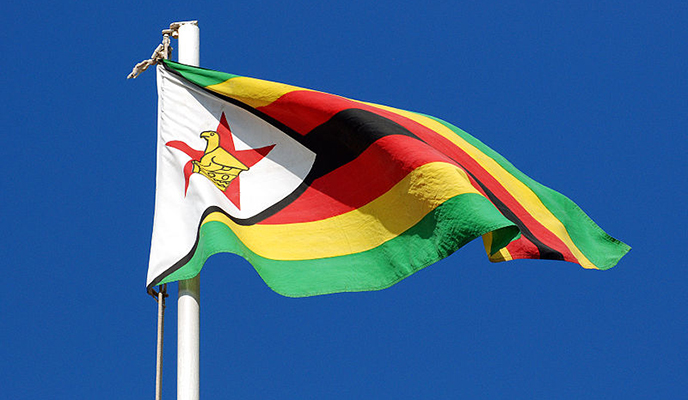
THE flying Zimbabwe Bird has over the past five years slowly become a rare sight in the air and it could be extinct soon considering the arrival of big birds of prey in the ultra-competitive aviation industry with very thin profit margins.
By PAIDAMOYO MUZULU
In the past few weeks, Zimbabweans enjoyed a rare experience that would soon become the new norm when they saw two of the biggest birds to have landed at the refurbished Victoria Falls International Airport. South African Airways (SAA) and Ethiopia Airlines are now flying directly into the resort Victoria Falls.
The two airlines, incidentally the biggest in sub-Saharan Africa, will fly a combined 11 direct flights into the resort town from Johannesburg and Addis Ababa, respectively, further cementing their prime position in aviation on the continent. On the other hand, Air Zimbabwe flies into Victoria Falls six times a week.
The picture gets scarier after Zimbabwe signed an agreement with South Africa last November that would give SAA 85 frequencies into Zimbabwe a week.
However, Transport and Infrastructural Development minister Joram Gumbo remains optimistic, despite liberalisation of the skies, that AirZim would weather the competition storm.
“We just agreed to increase frequencies to 85 per week. These include both cargo and commercial flights. The agreement is that those with the capacity should do it and we could not wait to sign the agreement until our airline was strong,” he said.
The minister remains confident that AirZim will rise again and spread its wings to Europe despite failing to get a partner over the past year because of the company’s bad balance sheet. Gumbo is currently on a business trip to Singapore trying to tie up an aircraft leasing deal with the Far East city state.
- Chamisa under fire over US$120K donation
- Mavhunga puts DeMbare into Chibuku quarterfinals
- Pension funds bet on Cabora Bassa oilfields
- Councils defy govt fire tender directive
Keep Reading
An insider at AirZim is sceptical of the company’s revival because of the disharmony between board and management at the airline.
“I don’t think we can reasonably compete or keep ourselves afloat without government intervention and, worse still, the board and management seem to be working at cross-purposes,” the insider said.
Zimbabwe’s situation has been made precarious by the opening of the skies with a new group and class of airlines — budget airlines — joining in the domestic market.
Zimbabwe has licensed FlyAfrica, FastJet and more recently Rainbow Airlines to operate domestically further reducing AirZim’s market segment.
MDC-T parliamentarian, Eddie Cross says Air Zimbabwe will not survive the competition.
“Air Zimbabwe is not in a state to compete against anyone. It has insufficient aircraft to provide a reliable service,” he said.
However, Ethiopian Airlines managing director (international services), Esayas Woldemariam believes Zimbabwe’s aviation problems are surmountable if it is focused.
“It all depends on the political will of the government of Zimbabwe, and on how they want to put it, whether it is going to be a joint-venture or management consultancy. Ethiopian Airlines is ready for all that. We have all the human resources, the material resources and the financial resources,” he said.
It is this change of management that Zimbabwe for long has been resisting. The government has always maintained that the national carrier should be operated as a parastatal and for political considerations unlike Ethiopian Airlines, which has independence in management of its affairs
Ethiopian Airlines is currently the biggest airline in sub-Saharan Africa both by fleet size and profit. It currently has 87 aircraft, which among other models include Boeing 777-300, a 400-seater, the Dreamliner Boeing 787 and the Airbus A350, the most modern one and the Boeing 737-800, the Sky Interior with next-generation engines.
The airline will be expanding its fleet by as many as over four dozen aircraft.
“The 55 aircraft have been ordered. Many of them are already getting phased into the fleet. In fact, last month we received additional Airbus A350s, so these will come successively in the next five to seven years,” Woldemariam said.
AirZim board chairperson, Chipo Dyanda said the fate of the airline lies in the hands of its shareholder.
“The shareholder will have to deal with the over $300 million legacy debts and give the airline a clean slate to start from,” she said.
Zimbabwe’s situation seems similar to SAA, but the difference is the South African government has deeper pockets to absorb the airline’s losses and keep it in the air.
SAA has over 50 aircraft and in the 2016 financial year recorded a loss of over R4 billion.
AirZim survival depends on the change of the business model, as it faces a number of bigger and well-funded competitors on international destinations such as London, Amsterdam and Munich.
Ethiopian Airlines flies to more than 80 destinations across the globe except Australia, while Emirates, that comes into Zimbabwe daily, has dramatically become one of the global aviation heavyweights in the last 20 years making Dubai International Airport one of the busiest airports in the world.
AirZim also faces competition from Kenya Airways, which operates in partnership with Dutch KLM and flies across Africa and into Europe.
Legislator Cross’s words are quite apt: “The national airline needs to enter into a strategic partnership with an operating airline to continue flying, otherwise it can’t survive the competition.”











